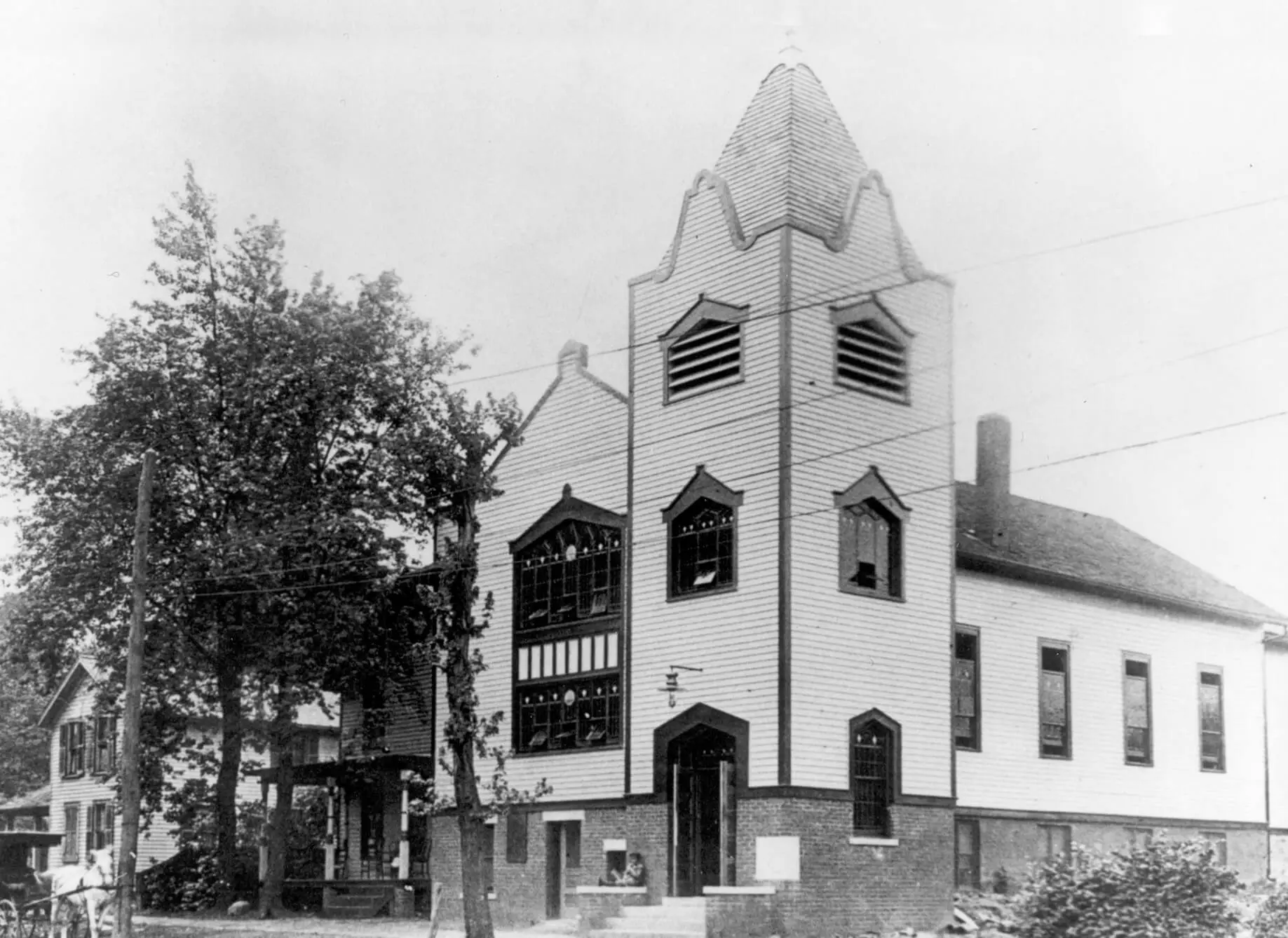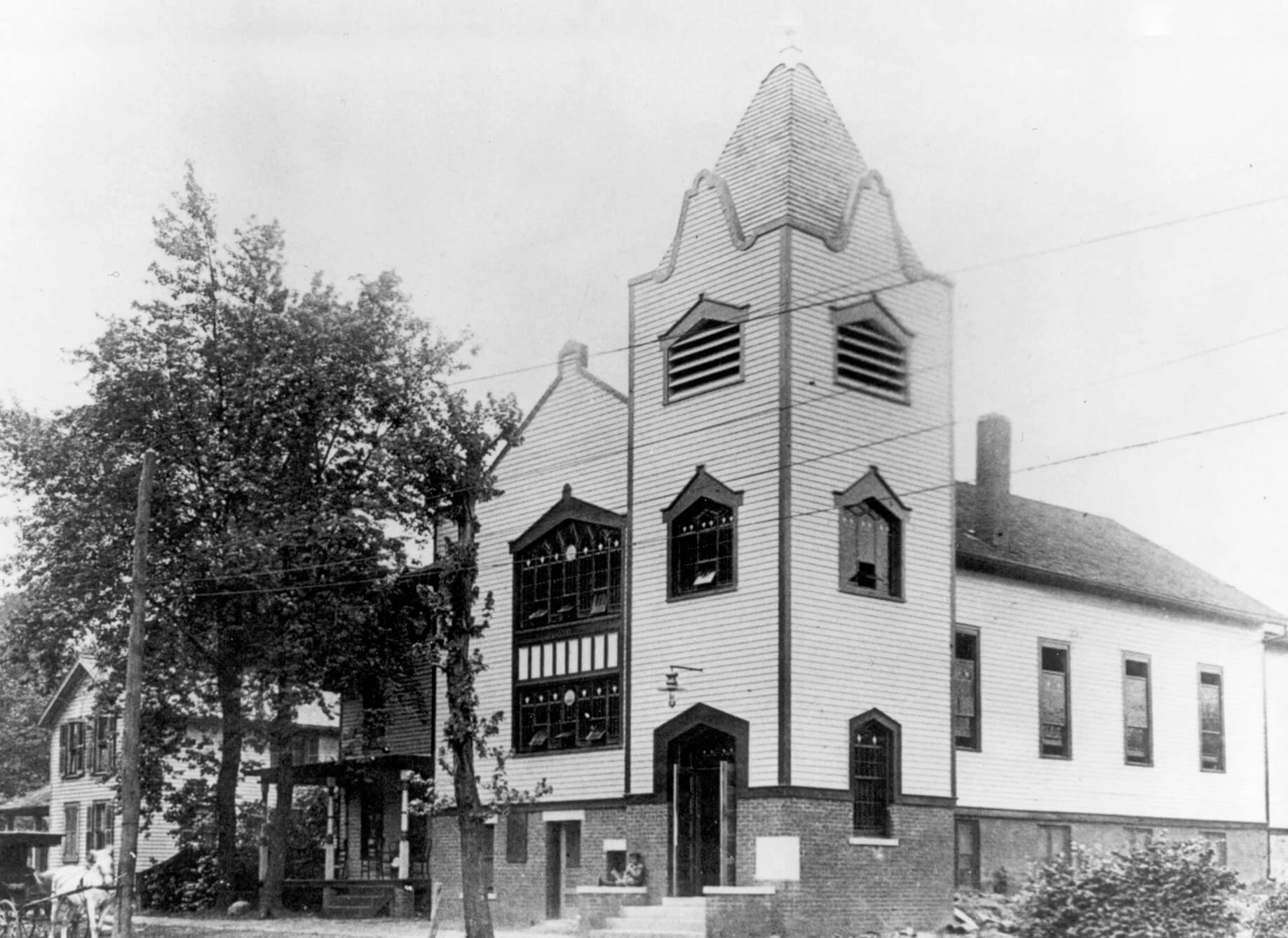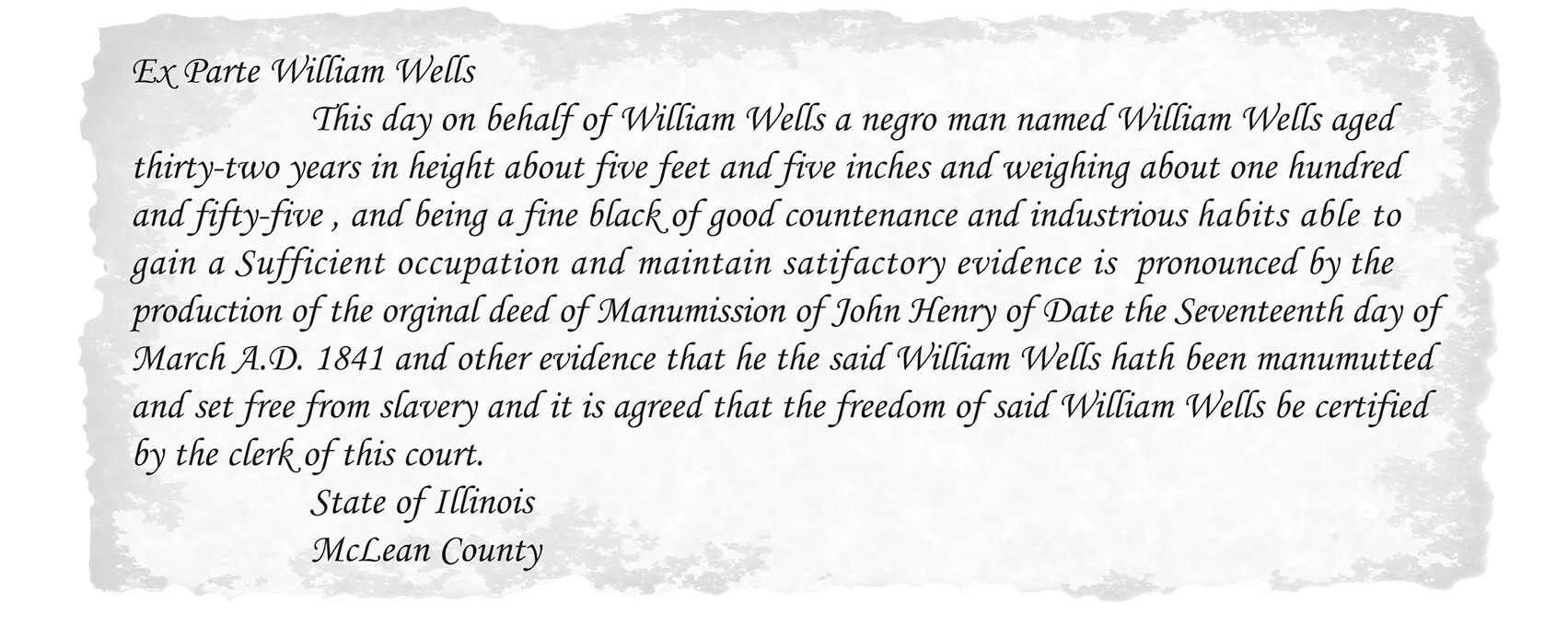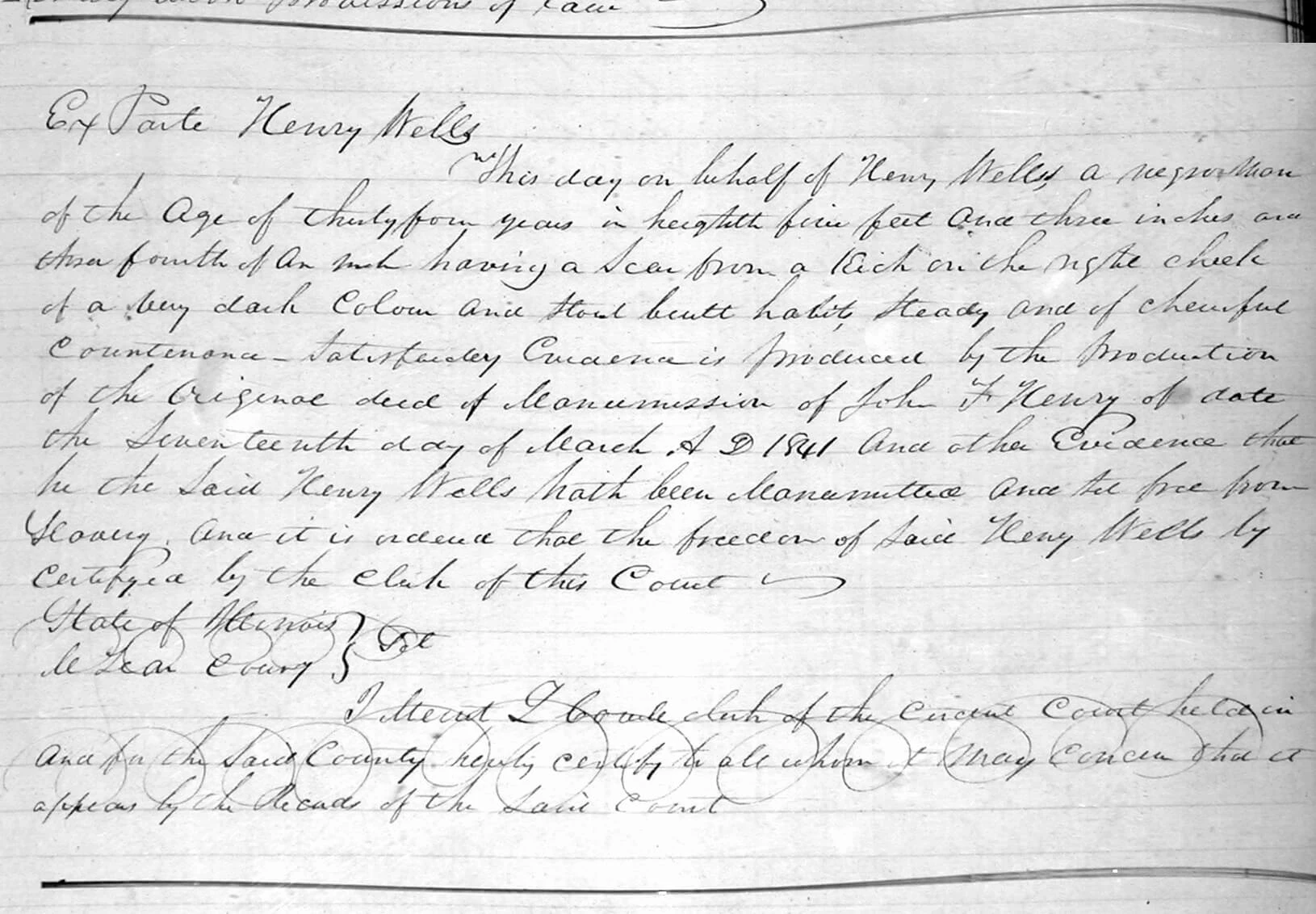The Great Rush – William and Henry Wells
Brothers William and Henry Wells had both been born into slavery. They were free men when they arrived in McLean County in 1835.
The brothers worked for their former owner Dr. John F. Henry who brought them to McLean County from Kentucky with his family. Dr. Henry paid the Wells brothers a "liberal wage" until they found jobs working elsewhere.
The Wells brothers were among the first African Americans to make McLean County their home. Though a small group, Bloomington’s African Americans organized their own church in the early 1840s.
African Americans made homes in free states whenever possible as life for free Black people in slave states was intolerable.
While Illinois was a free state, Illinois law made it difficult for them to live here.
Manumissions
William and Henry were required by Illinois law to have their manumissions recorded in the county records shortly after they arrived. Without this document they could not live in Illinois.
The Wells brothers’ manumissions documented that satisfactory evidence had been presented to the McLean County circuit court on March of 1841, and that they were free men. Dr. Henry provided the evidence that they were his former slaves and that he had given them their freedom.
Silver communion service set, circa 1890
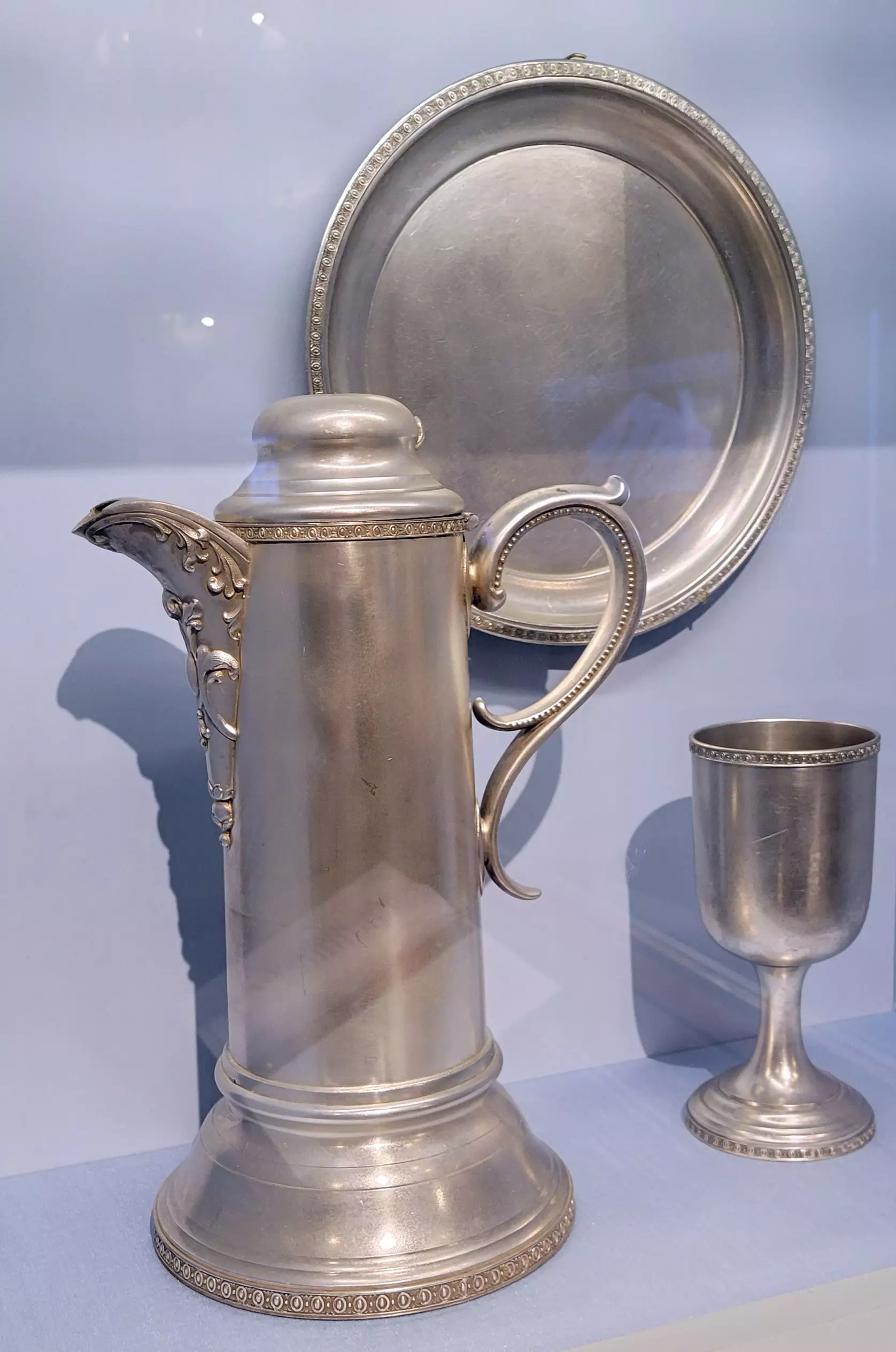
View this object in Matterport
Around 1890 Wayman’s minister Jeremiah Williams purchased this communion set for the church.
Donated by: Caribel Washington and Kathryn Dean
890.369
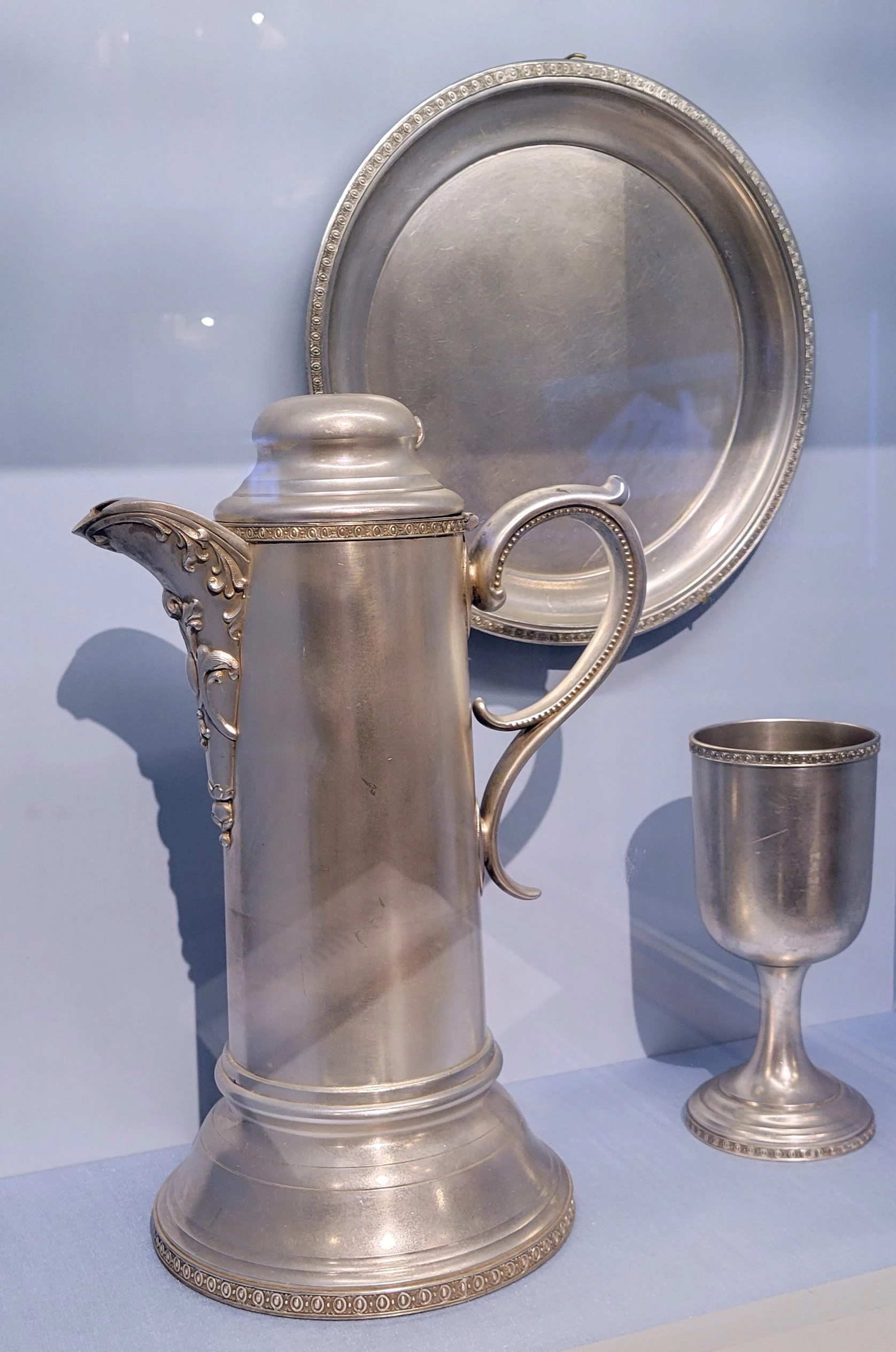
Within the Wayman A.M.E. Church, Henry and William Wells celebrated weddings and the births of their children. They also mourned the deaths of loved ones.
In 1842 William Wells married Ann Davis.
Eight years later William was listed in the 1850 census as a “Black laborer” with property worth $300—a good amount for a working man of the time.
In 1860 they had a home at 93 S. Main Street. In subsequent years, Ann disappeared from official records. Why is unknown. What is known is that vital records for Black Americans from this period are hard to come by and often incomplete.
William married again in 1867.
He and Mary Wells were also married by a Wayman A.M.E. church minister, the Reverend William Rutludge. Mary died sometime in the next few years. But like William’s first wife, there is no record of when or how.
One year later William Wells died. He was mourned by his brother Henry during funeral services at the Wayman A.M.E. Church.
William had fond memories of the early years in Bloomington:
“In those good old times, money was an article seldom seen, yet people lived in plenty, and enjoyed themselves not in excitement and hurry, but in the quiet way of peaceful frontier towns.”
— William Wells,
The Daily Pantagraph, January 24, 1873
In 1840 Henry Wells married Rebecca Barnes and, as a result, got a steady job.
Rebecca was a maid for Mary Gridley, the wife of prominent businessman Asahel Gridley. After Henry married Rebecca, Mary hired him to tend the Gridley horses.
Henry and Rebecca made a home on “South Hill.” Their daughter Mary was born about 1851. Rebecca died soon after Mary’s birth.
In 1856 Henry married again, this time to Eliza Robinson.
They had two children and by 1860 were living on Main Street. Henry made a living as a handyman and whitewasher, while Eliza managed the household.
Henry Wells lived to be nearly 100 years old, but was destitute when he died.
His funeral was held at the Wayman A.M.E. Church.
“Friends purchased a new suit and a fine coffin for the old man and he will be respectably buried... He always led a moral life and was well respected.”
— The Daily Pantagraph, 1898
 Making a Home
Making a Home
 A Community in Conflict
A Community in Conflict
 Working for a Living
Working for a Living
 Farming in the Great Corn Belt
Farming in the Great Corn Belt
 Abraham Lincoln in McLean County
Abraham Lincoln in McLean County
